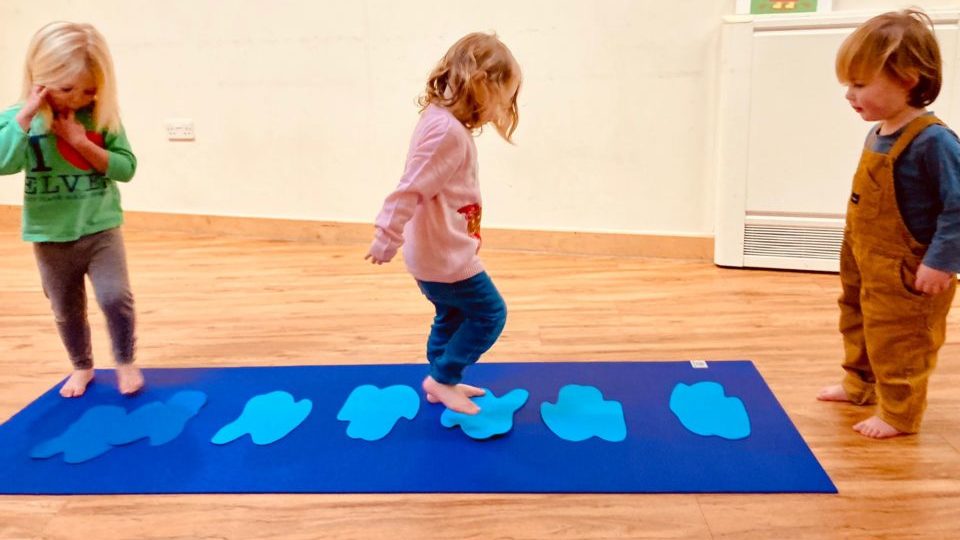
In July 2020 I trained to teach Toddler Yoga with Birthlight. I have been teaching baby massage and baby yoga for the past 10 years and wanted to expand this valuable work to parents and young children. I have also worked as a Speech and Language Therapist for 18 years providing therapy and support for children and their parents. The Birthlight toddler yoga course, delivered online by Emma Philip, was inspiring and it reignited a thought that I had when I did my baby yoga training: the power of parent and child yoga to develop children’s communication skills.
The more toddler yoga classes I run, the more I am seeing the impact they can have. The diagram below illustrates the many areas that my parent and toddler yoga classes support.
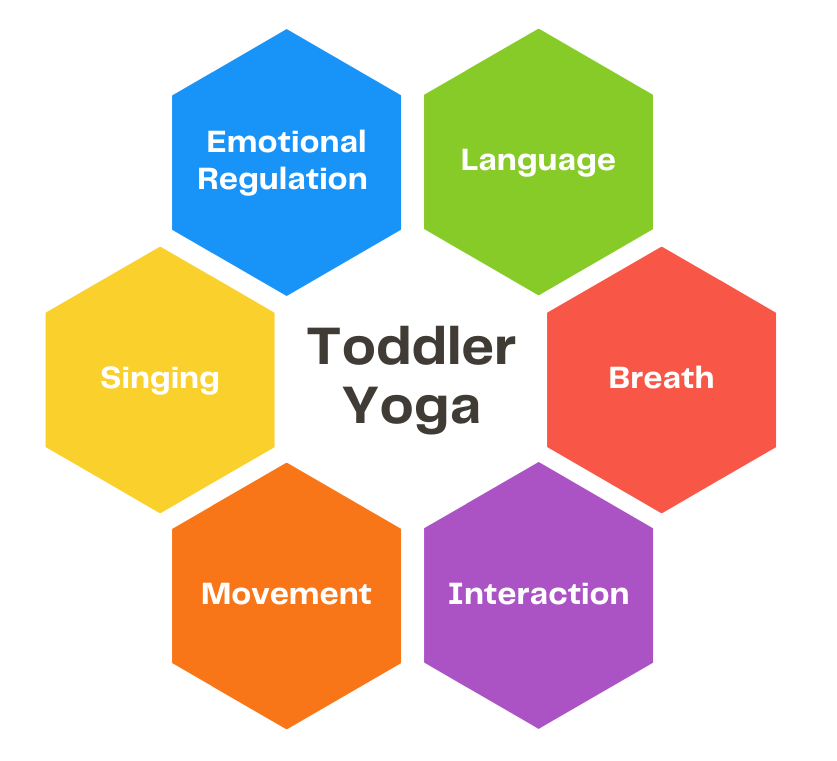
Language
We know that the early years are critical for children’s development
helen guntrip, Specialist Speech and Language Therapist
The children attending my classes, at the moment, are aged been between 18 months and 2.5 years. We know that the early years are critical for children’s development, especially their language and communication skills. My classes are repetitive. I find that young children like the familiarity of routine. It helps them to settle and feel at ease as there is a predictability to each class. Children need to hear words several times to enable them to remember them and then say them. Rather than having a different theme each week I cover similar vocabulary in every class: greetings, animals, transport, body parts, action words (jump, sleep, roll), position words (up, down, under, forwards), weather, colours, words linked to feelings. I vary the activities slightly from week to week but the structure of the class remains the same: A welcome song, a warm up, various songs and activities, relaxation and a goodbye song at the end. Parents have commented that their children are now using new words that they have heard in the class.
There is no pressure on the children to speak or say words. Some children love to join in verbally, others prefer to just join in with the movements. To develop their understanding of words, children benefit from hearing words related to what they are doing rather than being asked questions. My experience of working with children with communication difficulties makes me conscious to ensure that all children can understand and participate. I therefore use a range of visual support including, pictures, gestures, signs, objects and facial expression. Every activity has a picture or an object to represent it. I keep my language simple and at a level appropriate for the group, differentiating for each child if needed.
Breath
From birth, babies are developing their ability to hear and make sounds. Toddler Yoga encourages both parents and children to have fun playing with sounds and simultaneously the breath. Children experience different types of exhalations as they move into various animal poses – from the deep roaring of the lion to the high frequency hissing of the snake. They may feel the calming effect the elongated ‘shhhh’ exhalation when we curl up for ‘sleeping bunnies’ or the vibration of the ‘zzzzz’ of the bee. They enjoy joining in with the ‘ch ch ch’ of the train going down the track as they bounce up and down on parents’ laps. The children love to make the sounds – no-one cares whether they are correctly pronounced, the children are just watching their parent’s mouths and faces and imitating. As children get older we can explore the breath more, but playing with sounds is the perfect introduction. Making and listening to sounds is the foundation for speaking.
Movement
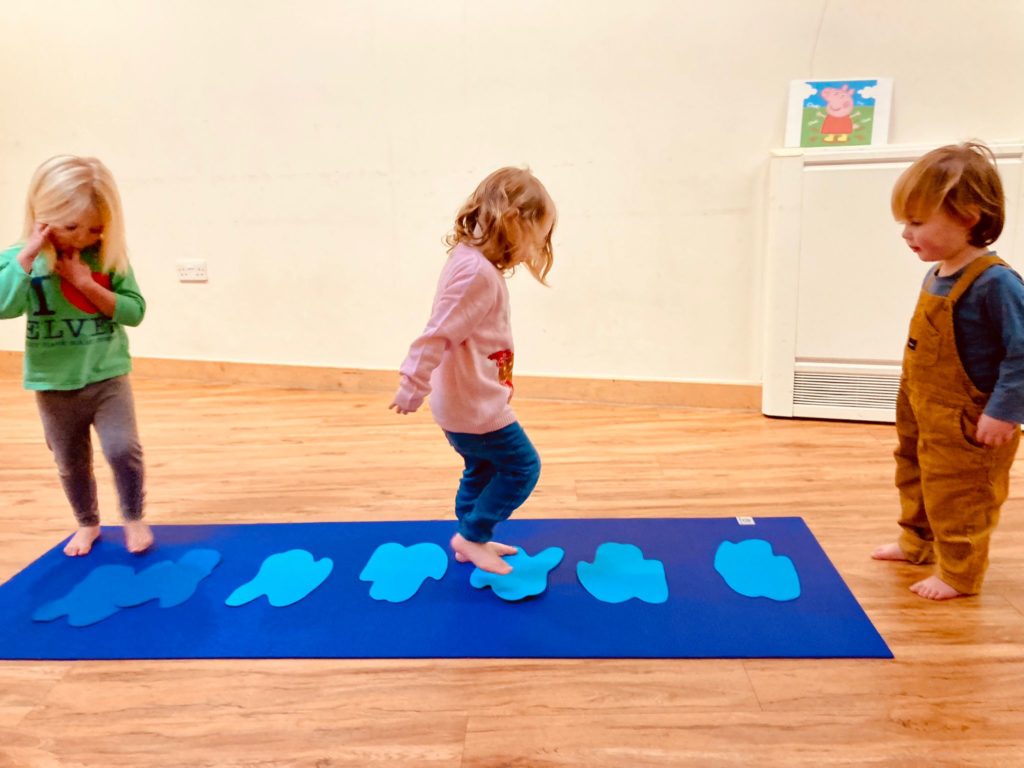
Children need to move and they learn through movement. Toddler yoga enables them to develop their gross motor skills, body awareness, balance and co-ordination. Some toddlers have missed out the crawling stage, moving straight to walking. Toddler yoga gives children the opportunity to crawl, enabling them to benefit from integrating and co-ordinating both sides of the body. Repetitive movement such as clapping, tapping, marching, jumping and rolling can be regulating for children. Babies hear the rhythmic beat of their mother’s heart in the womb and are soothed by being rocked. Toddlers can also find this type of movement settling and calming. Through toddler yoga parents become aware of the movements that calm or energise their children (this will be different for every child) they can use these movements to help their child if they are low in energy or need calming. When children are having fun moving their bodies they are focused in the moment and hear the language to match their actions at the same time.
Singing
Singing and music relaxes us, it releases oxytocin, extends our exhalation, and makes us feel calm. Songs and rhymes are so important for language development. The repetition of songs supports children’s listening and vocabulary skills. Action songs, especially those with a parent such as ‘row the boat’, are fun and provide the opportunity for shared movement, touch and interaction. When singing we tend to slow our pace down, enabling children to hear the rhythm and rhyme, all of which supports those crucial foundation skills for speaking, listening and ultimately reading and writing.
Emotional Regulation
Emotional regulation is our ability to recognise how we are feeling and develop ways to manage this. Children of all ages, and many adults, need to have someone to help us and co-regulate. Having taught baby massage and baby yoga for many years, I emphasise the importance of my classes being baby led and encourage parents to notice their babies cues and respond to them. I apply the same philosophy to my toddler yoga classes. Parents and children know that all emotions are welcome, crying is ok, feeling anxious is ok, getting really excited is ok. The yoga mat provides an individual space for each parent and child to share. As long as the children are safe they are welcome to move away from their mat, the group and activities for as long as they need to. I encourage parents to allow children to sit on their laps or have a cuddle if they are seeking a moment of connection or reassurance. In the same way that we don’t massage a baby when they are not in the mood, I encourage parents to read their toddlers cues and allow them to join in when they are ready. With no pressure to join in, parents can relax, breathe and enjoy the classes rather than trying to persuade their child to be doing the expected thing.
Relaxation
I really didn’t believe this could happen! At the end of each class, I dim the lights and give a glitter tube to each child full of stars for them to watch. I always do the same thing and have found that, once the lights go down, they return to sitting on their mats with their parents. Some cuddle up, some sit up, others lie down and they listen to me recounting all the amazing things they have done in the class. We then listen to a song together to end the session.
Interaction
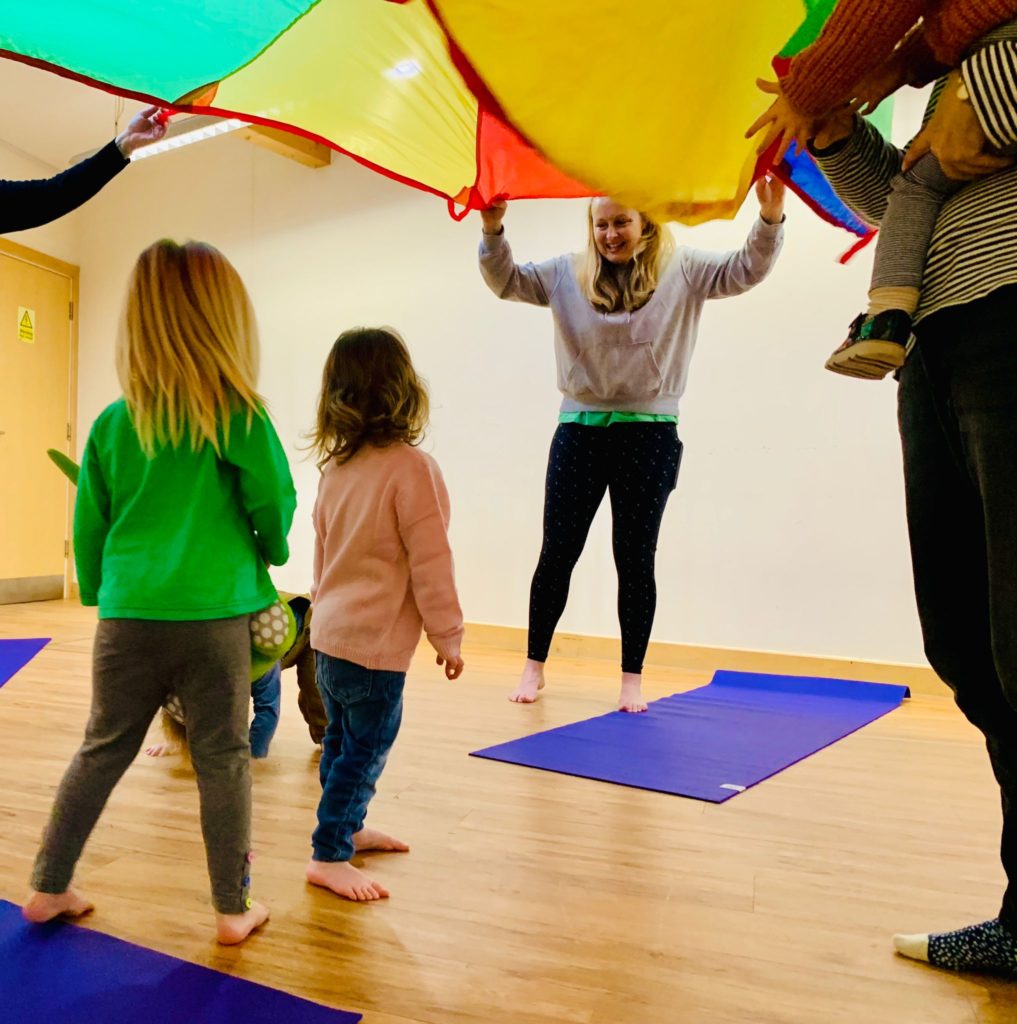
I love seeing the interaction between parents and their children during the classes. The shared movements, songs and rhymes enable parents to give their children their full attention, be present in the moment and develop their communication skills at the same time. From the poses to the relaxation, there are no expectations for parent or child, there is no ‘right’ way to be. I hope that my classes provide a break away from the pressures of parenting, a time to connect together without judgement. I make sure that all activities are easy to replicate at home and provide parents with a playlist of songs.
So that gut feeling I had during both Birthlight baby and toddler yoga training is now becoming a reality as I am seeing positive changes week by week in the children coming to classes. I would love to be able to prove this impact through research, although I’m not sure if it can be quantified. The simplicity of a shared song, a time to move together, positive touch and interaction -that is the power of toddler yoga!
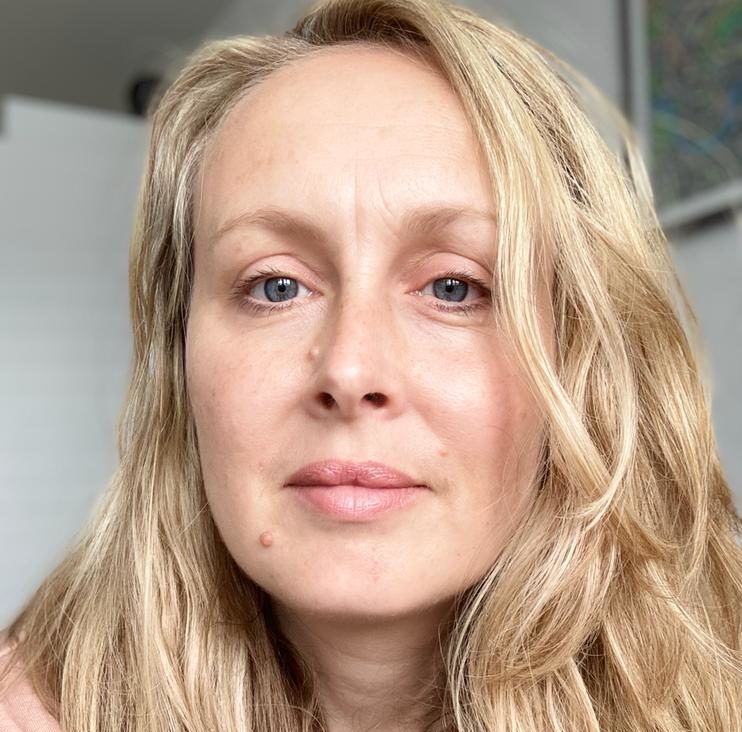
Helen Guntrip
Helen Guntrip is a Certified Infant Massage Instructor with the International Association of Infant Massage (IAIM), and a Birthlight Baby and Toddler Yoga teacher. She is also a Specialist Speech and Language Therapist.
You can reach Helen and sign up for her classes via her social media channels:
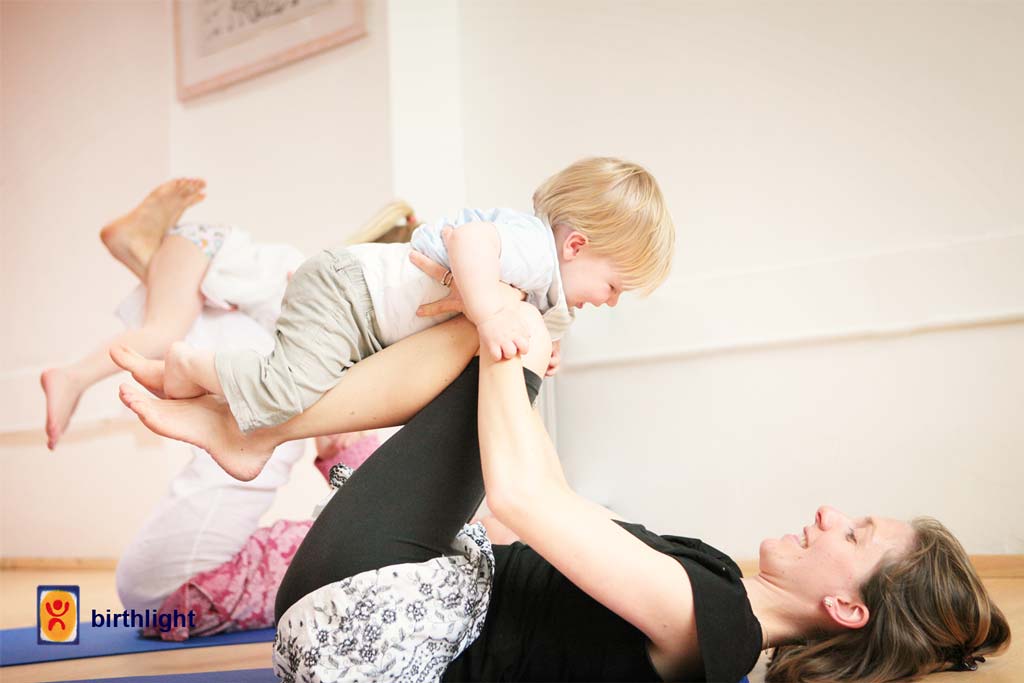
Birthlight Toddler Yoga Course
Train with Birthlight to be a Toddler Yoga Instructor – course in January 2022